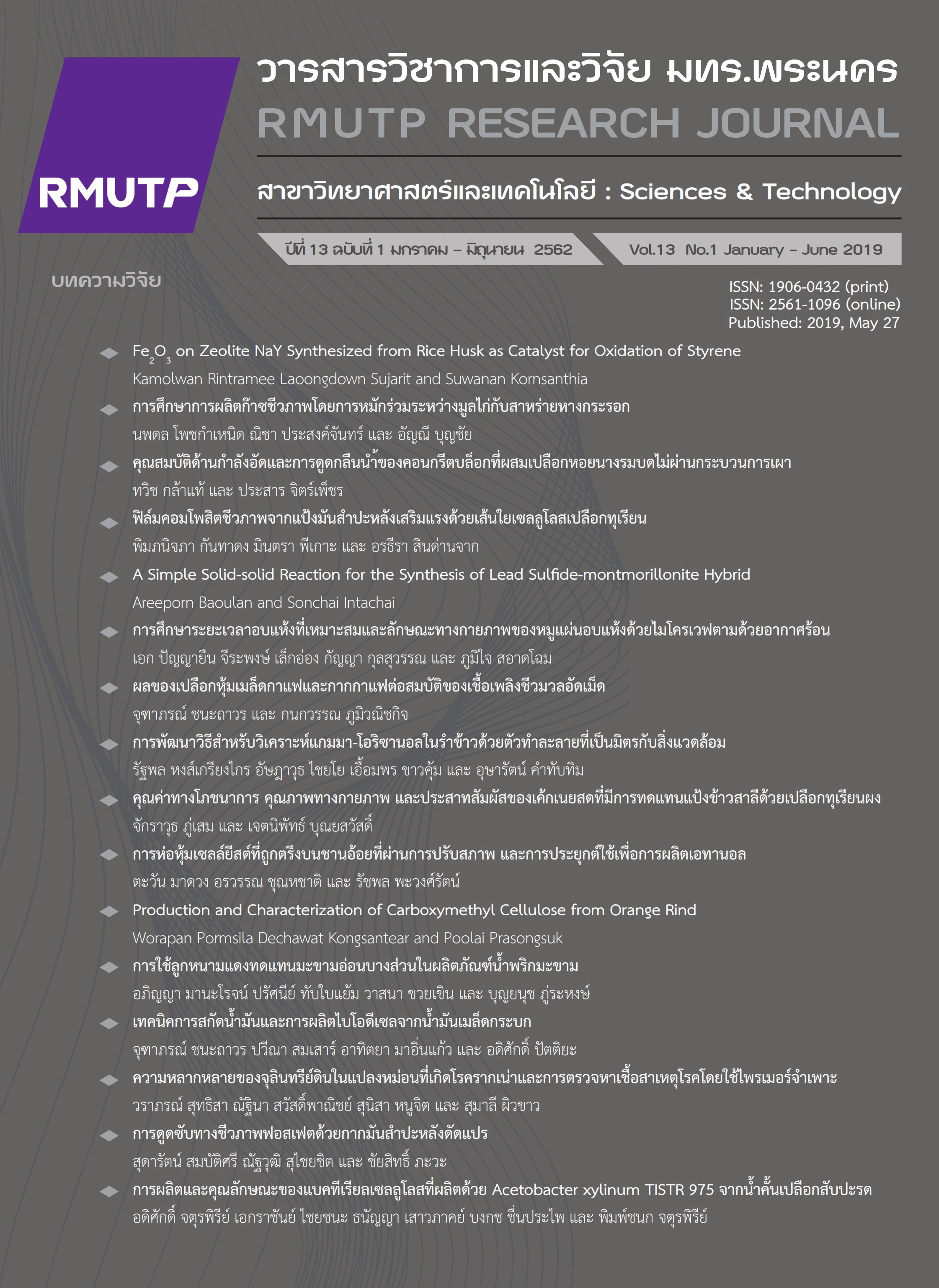Biosorption of Phosphate using Modified Cassava Waste
Main Article Content
Abstract
The biosorption of phosphate using modified cassava waste were studied. Cassava pulp was modified in methylamine for the adsorption of phosphate ion in aqueous solution. XRD, SEM and FTIR result confirmed the surface modification of modified cassava waste. The adsorption experiments were conducted in a batch reactor. The studied parameters included pH, contact time and initial concentrations. The amount of phosphate in the solution was measured by Vanadomolybdophosphoric acid method. Optimum conditions of adsorption were 0.10 g of modified cassava waste, pH 4 and 5 hour of contact time at 25 mg/L of initial phosphate concentration. Kinetic of adsorption were studied by using the pseudo-first and pseudo-second-order models at room temperature. The results indicated that the pseudo-second-order model best described adsorption kinetic data. The Langmuir and Freundlich adsorption models were applied to describe the isotherms and isotherm constants. The adsorption of modified cassava fitted well with the Langmuir model and the maximum adsorption capacity of 5.128 mg/g; and the active site of adsorption was amine functional group. Phosphate released in water reach equilibrium within 4 days.

